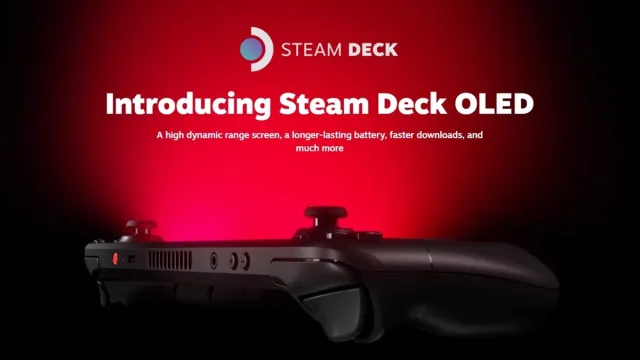Valve has two Steam Deck OLED screen suppliers, suggesting spec differences
Valve’s newly announced Steam Deck OLED is, effectively, a mid-generational upgrade to the original device whose biggest draw is its 90Hz HDR-enabled OLED display. As revealed by the company’s Gamescope GitHub page, however, there appear to be two companies supplying the display.
As per line 906 of the referenced GitHub, Valve is sourcing the much-touted Steam Deck OLED display from two separate suppliers: SDC and BOE, which stand for Samsung and BOE Technology, respectively. This isn’t necessarily cause for concern on its own, as these are the same companies that supply OLED displays for Apple’s own iPhone 15, but it is certainly worth taking into account, considering one of the original Steam Deck’s early stumbling blocks: the whiny fan noise.
Will Steam Deck OLED have display problems?
Notably, Valve used two separate fan suppliers for its first model of the Steam Deck: Huaying and Delta. Spec-wise, these were ostensibly the same fans, but in a practical scenario, it turned out that Delta hardware was louder than the Huaying equivalent, with a particularly unpleasant whine popping up at certain speeds and frequencies.
Obviously, the OLED display is decidedly not supposed to whine in any scenario, but it’s entirely within reason to expect some minuscule differences between displays produced by two entirely different companies. As Valve is totally mum on the matter, having neither confirmed nor denied whether the information present on the GitHub in question is fully up-to-date, we won’t know how the two compare in action until content creators get their hands on it.
On a similar note, there’s one more potential concern early Steam Deck OLED adopters might have: the top-end model’s matte display. There’s been some murmuring in the community about the etching process potentially doing away with some of the biggest draws of a good OLED display, such as its vivid colors and inky blacks, and it’s going to take more testing and hands-on experience before we can confidently say whether the issues are present or not.
Regardless, the existence of the Steam Deck OLED is a huge deal all on its own, and a good sign of things to come from Valve.
Valve’s newly announced Steam Deck OLED is, effectively, a mid-generational upgrade to the original device whose biggest draw is its 90Hz HDR-enabled OLED display. As revealed by the company’s Gamescope GitHub page, however, there appear to be two companies supplying the display.
As per line 906 of the referenced GitHub, Valve is sourcing the much-touted Steam Deck OLED display from two separate suppliers: SDC and BOE, which stand for Samsung and BOE Technology, respectively. This isn’t necessarily cause for concern on its own, as these are the same companies that supply OLED displays for Apple’s own iPhone 15, but it is certainly worth taking into account, considering one of the original Steam Deck’s early stumbling blocks: the whiny fan noise.

Will Steam Deck OLED have display problems?
Notably, Valve used two separate fan suppliers for its first model of the Steam Deck: Huaying and Delta. Spec-wise, these were ostensibly the same fans, but in a practical scenario, it turned out that Delta hardware was louder than the Huaying equivalent, with a particularly unpleasant whine popping up at certain speeds and frequencies.
Obviously, the OLED display is decidedly not supposed to whine in any scenario, but it’s entirely within reason to expect some minuscule differences between displays produced by two entirely different companies. As Valve is totally mum on the matter, having neither confirmed nor denied whether the information present on the GitHub in question is fully up-to-date, we won’t know how the two compare in action until content creators get their hands on it.
On a similar note, there’s one more potential concern early Steam Deck OLED adopters might have: the top-end model’s matte display. There’s been some murmuring in the community about the etching process potentially doing away with some of the biggest draws of a good OLED display, such as its vivid colors and inky blacks, and it’s going to take more testing and hands-on experience before we can confidently say whether the issues are present or not.
Regardless, the existence of the Steam Deck OLED is a huge deal all on its own, and a good sign of things to come from Valve.
